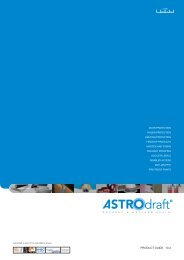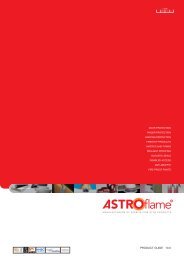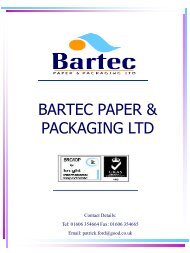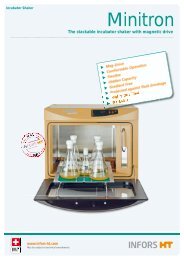Fastening & Assembly Solutions & Technology July 2012
Fastening & Assembly Solutions & Technology July 2012
Fastening & Assembly Solutions & Technology July 2012
Create successful ePaper yourself
Turn your PDF publications into a flip-book with our unique Google optimized e-Paper software.
FAST JULY <strong>2012</strong><br />
ADHESIVES IN MEDICAL DEVICES<br />
High performance<br />
bonding and sealing for<br />
medical devices<br />
Medical devices demand the highest level of quality and reliability. FAST discusses the adhesive<br />
materials used in their manufacture which must be biologically inert, corrosion and temperature<br />
resistant and have the durability and strength to perform flawlessly under a variety of conditions<br />
Choosing the best assembly method<br />
can be an exacting design task. This<br />
is especially true when joining dissimilar<br />
materials and when bonding certain plastics.<br />
Frequently, materials with the best<br />
engineering properties for sterile medical<br />
applications are the most difficult to join.<br />
For these difficult-to-bond substrates and<br />
for many other medical devices, adhesives<br />
provide the optimum – indeed often<br />
the only – assembly method.<br />
In selecting an adhesive it is important<br />
to look at the entire assembly process,<br />
including the preparation of substrates<br />
and the dispensing and curing of the adhesive.<br />
The process must be controllable<br />
and consistent to comply with the myriad<br />
of regulations governing the manufacturing<br />
process.<br />
Often the limitations of the process<br />
considerations placed on the adhesive’s<br />
properties will narrow the choice significantly.<br />
But the correct choice enables<br />
Either UV or cyanoacrylate adhesives are used<br />
on balloon catheters as the adhesive is under a<br />
high peel load when the balloon is inflated<br />
30<br />
medical device manufacturers to speed<br />
product development and manufacturing<br />
cycles, typically for disposable-, sterileand<br />
non-sterile reusable devices.<br />
Single, multiple and non-sterile<br />
In order to meet the ISO 10993 regulatory<br />
requirements for bio-compatibility,<br />
all elements of disposable devices,<br />
including adhesives, must resist the sterilisation<br />
process used by the device manufacturer.<br />
Typical applications include:<br />
fluid and drug delivery sets, catheters,<br />
infusion products, syringes, hypodermics,<br />
injectors and cardiovascular & cardiopulmonary<br />
surgical devices.<br />
Sterile reusable devices may be used a<br />
number of times and are re-sterilised each<br />
time. Examples of these products include<br />
surgical instruments, endoscopes, laparoscopes<br />
and arthroscopes. The introduction<br />
of polymers able to withstand repeated<br />
exposure to autoclaving temperature has<br />
greatly expanded the number of different<br />
sterile reusable devices now available.<br />
The stainless steel cannula is<br />
bonded to the polycarbonate hub<br />
using a UV acrylic<br />
There are many medical products however<br />
where bio-compatibility is not an<br />
issue. These products include orthopaedic<br />
and rehabilitation equipment such as<br />
wheel chairs, braces, hearing aids and<br />
prosthetic devices as well as imaging,<br />
monitoring and measuring equipment.<br />
Non-sterile reusable devices can be bonded<br />
with standard adhesives, not specifically<br />
designed for medical device manufacture.<br />
Chemical bonding<br />
Mechanical fastening, insert moulding,<br />
thermal bonding and solvent welding –<br />
they all have merits but also many shortcomings<br />
that can be addressed by adhesive<br />
bonding. The ability to join different<br />
material, such as thermoplastic, thermoset<br />
plastic, elastomer and metal, is a very<br />
important advantage of adhesive bonding.<br />
When compared to other methods adhesives<br />
offer design advantages, speedy<br />
assembly, increased production efficiency<br />
and in many cases increased production











